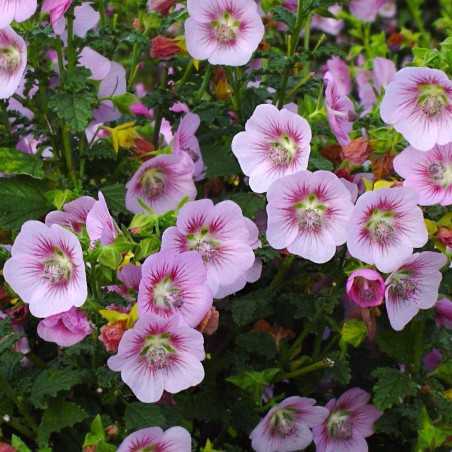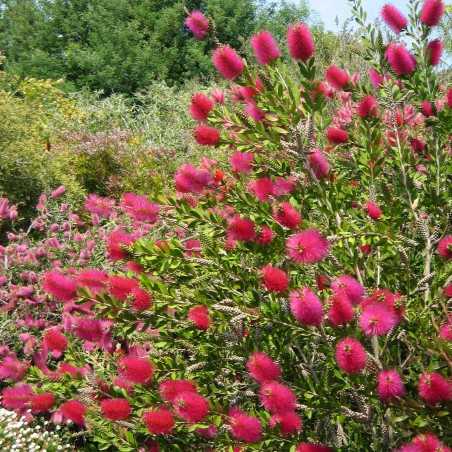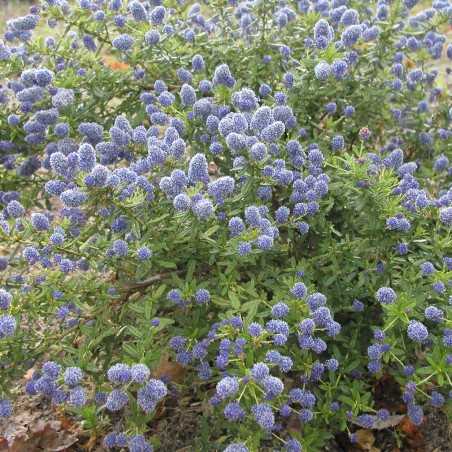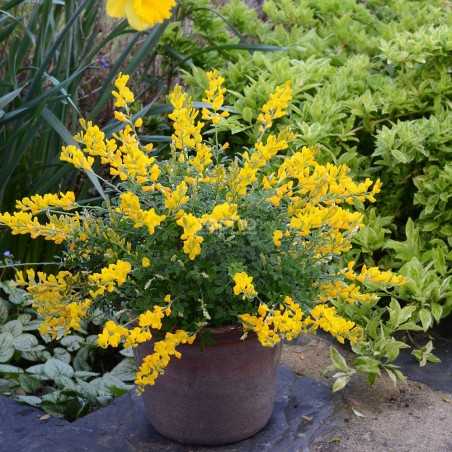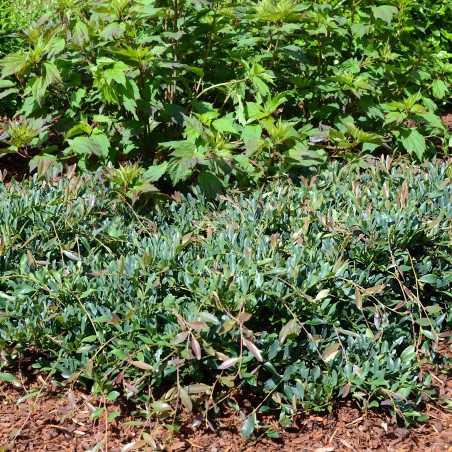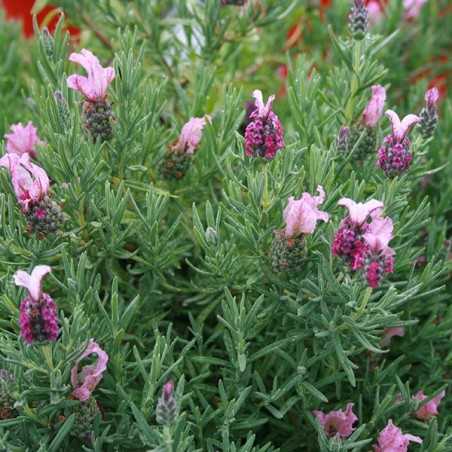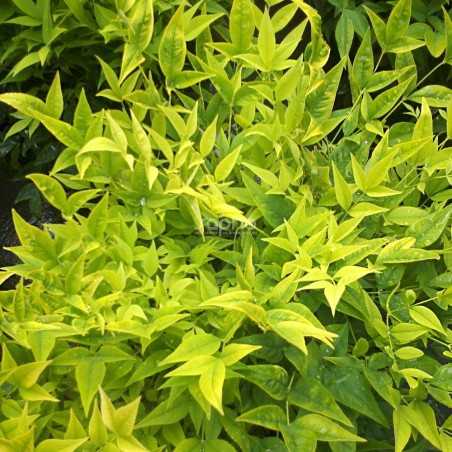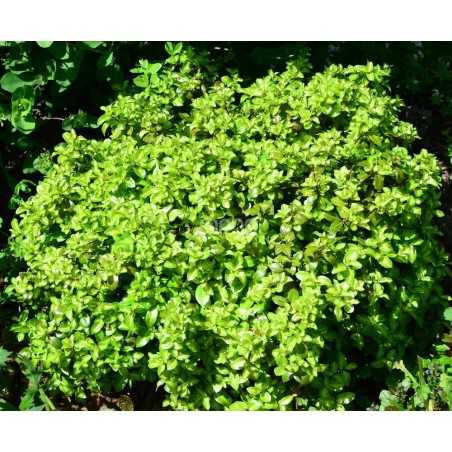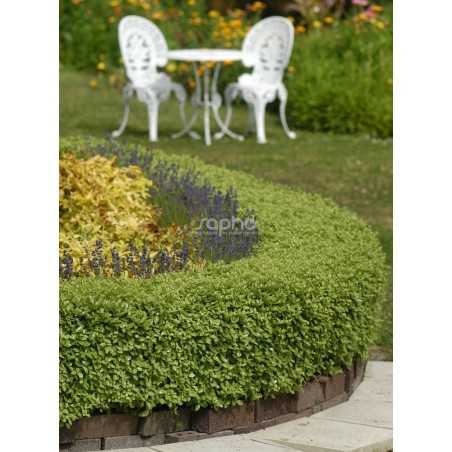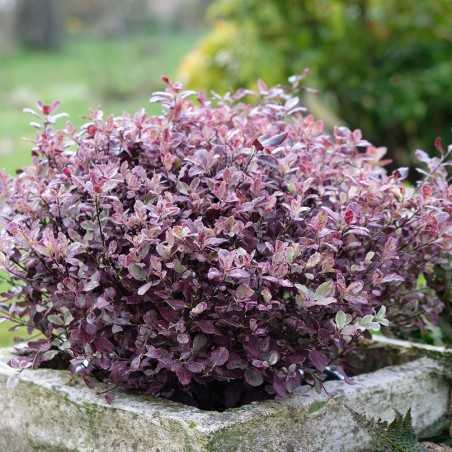Covered in flowers from spring to autumn!Native to South Africa, this new selection of Anisodontea flowers abundantly almost without interruption from April to October and continues late into autumn in regions with mild winters. The flowers, similar to those of Malvaceae, are two-toned: pale pink with dark pink veins in the centre, and larger than others of the species (2 - 3 cm in diameter). They attract butterflies.'Miss Pinky' quickly shapes into a shrub with long straight, more or less ramified branches. This variety has a more compact shape than others of this species.Its finely jagged foliage is fragrant and evergreen to semi-evergreen.Covered in flowers from April onwards, and in certain regions until October, 'Miss Pinky' is of sure value, for beds as well as in pots on a terrace or balcony.Protect in regions with cold winters.
Filter By
Foliage
Position
Categories
Menu
Trees and shrubs
Bright pink flowers for this Callistemon, more hardy than other classic varieties.Like all the 'bottle brushes', the flowers are grouped in a characteristic way like flower stalks at the end of the branches; the long stamens give the shrub its ornamental appeal.It is scarlet pink, a complimentary colour to the traditional varieties, the flowers bloom from the end of May and in June for a month and more discretely in the autumn if they are cut under the wilted flowers.The red coloured young shoots make room for fine narrow grey-green foliage, which can persist all winter. HOT PINK is hardier than other classic varieties.The shape of this Callistemon selection originating from South Africa is rounded and well ramified and grows up to to 2 meters in height in areas with favourable climate.
An ideal evergreen for small spaces.
Blue Diamond' is a shrub of about 1.00 m high with shiny evergreen foliage.
Its beautiful deep blue flowers spread from May to June.
It is advisable to plant it in a warm position, sunny and sheltered.
Just like a sun! Must be potgrown and protected during cold winters.This INRAE - EUROGENI variety has been selected for its regular growth, more compact and branched than the standard species, even without trimming. For production in nurserys no regulators are needed.Beautiful healthy dark green foliage and fine wood. The abundant scented flowering in March-April is 8 - 10 days later than the Cytisus Racemosus and of a more orangey yellow.A real sun in spring, PHEBUS® must be potgrown and protected during cold winters.Trophies: Bronze Medal at Innovert® 2016 Horticulture category (Angers - FRANCE)
A novelty amongst the small evergreen shrubsThis selection by M. DIRR is a hybrid between Distylium myricoides and Distylium racemosus.Resistant to insects and pathogenic agents, tolerating drought and heat, BLUE CASCADE® is an excellent replacement for traditional evergreen shrubs. Bronze during budding, the long and straight foliage then turns original mat blue-green.The flowering is insignificant.Its dense and compact cascading growth, allows it to be used in low hedges or as ground cover, in regions with temperate winters (hardy down to -15°C). It is also happy grown in pots.Avoid too basic ph soil.
A fragrant pink cushion that never stops blooming!
MAGICAL® Posy Pink lavender is a very compact variety that forms a round cushion of flowers! It blooms abundantly and remontantly in pink, offering pretty colors from late April to late September.
What's more, its fragrance attracts many insects!
This is a robust variety, selected for its resistance to humidity and heat.
A pretty, fragrant purple cushion that never stops blooming!
MAGICAL® Posy Purple lavender is a very compact variety that forms a round cushion of flowers! In fact, its purplish-blue blooms are very abundant and remontant, offering pretty colors from late April to late September.
What's more, its fragrance attracts many insects!
It's a robust variety, selected for its resistance to humidity and heat.
A real improvement among the French-LavendersTHE PRINCESS® Lavender, a real improvement in the French Lavender family is remarkable for the intensity of its bright pink flowering. Abundant, scented, it starts early in April-May, then continues during the summer with its numerous new flowers, facilitated by pruning.The aromatic evergreen foliage is grey-green.The tight and compact shape of this very attractive selection allows it to be used in beds of reduced dimensions, as a low hedge, planted 50 cm apart, or also grown in a large pot.Trophies: Plant of the year 2014 Nursery & Garden Industry australia awards : national winnerWinner Product innovation 2013 the Australian Business Awards
In springtime its chartreuse coloured leaves are very attractiveA Nandina with a brand-new colour! The new shoots are yellow-green, chartreuse or also lime green and very bright. In full sun the outer leaves keep their chartreuse colour, whereas the inner leaves turn light green.Its shape is very interesting, forming a bushy and branched little shrub of under 1 m, like a ball.It never flowers, or very seldom.Recommended to illuminate the darker parts of the garden in the spring, it also accepts to be grown in pots.Trophies: Gold medal at PLANTARIUM 2014 (Boskoop - NETHERLANDS)Honored with a Retailer's Choice Award™ at SNA 2014
A golden ball for low hedges or in isolationThe variety 'Golden Ball' has very brilliant golden foliage. In its period of growth, its young golden-yellow leaves contrast with the older yellow-green leaves edged with a stronger green.Coming from the same breeding than Pittosporum tenuifolium 'Golf Ball', 'Golden Ball' has the same qualities: very dense, it naturally forms a ball of less than one meter. Fast-growing and branching from the base, it can be pruned. 'Golden Ball' is ideal for small spaces and low hedges as well as in pots and for topiary.As it is resistant to drought, wind and seaspray, it provides an alternative to box in temperate and Mediterranean areas. In May and June its small discreet violet-coloured flowers smell of honey.
Recommended for its low, naturally ball shaped growthThis cultivar originates from New Zealand.?Golf Ball? has a very round shape, not more than 1 m in dimension. It grows rapidly and stands out by its dense branches from the base upwards.Its evergreen foliage is light green.Discrete violet-brown flowers appear in Mai and June. The have a scent of honey but are of no decorative interest. 'Golf Ball' resists rather well to drought, and to temperatures of -5 to -10° C. It is excellent for the sea side because it accepts mist and wind.Recommended for small areas and low hedges, it is also suitable for pots and as topiary, like box.
Fantastic foliage in perpetual evolution
The Bannow Bay variety is a natural mutation of the Pittosporum Tom Thumb.
Its very dense foliage has evolving colors: olive green edged with white in spring, then splashed with pink and finishing in a beautiful shade of purple when the cold arrives.
Its natural, round clump growth requires little or no pruning.
This shrub adapts perfectly to mild climates, in the garden or in pots on a balcony or terrace.

